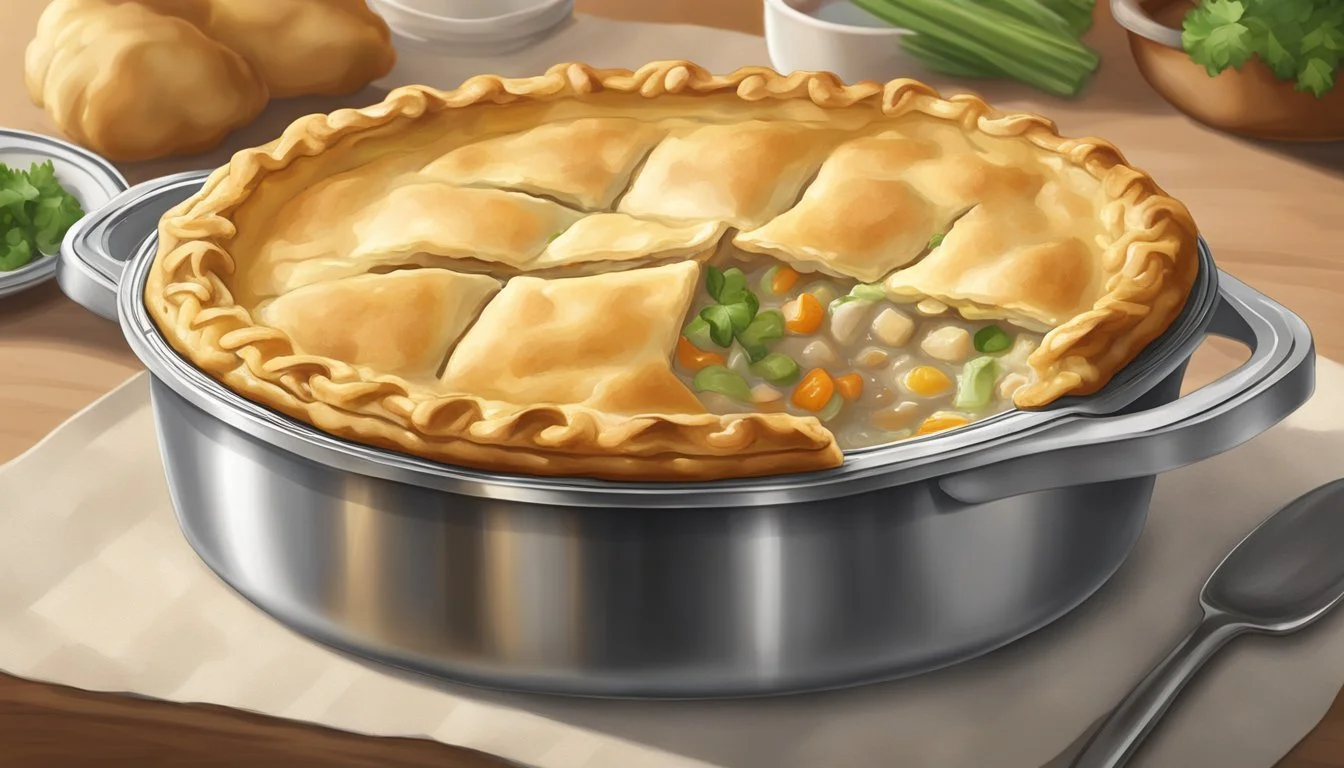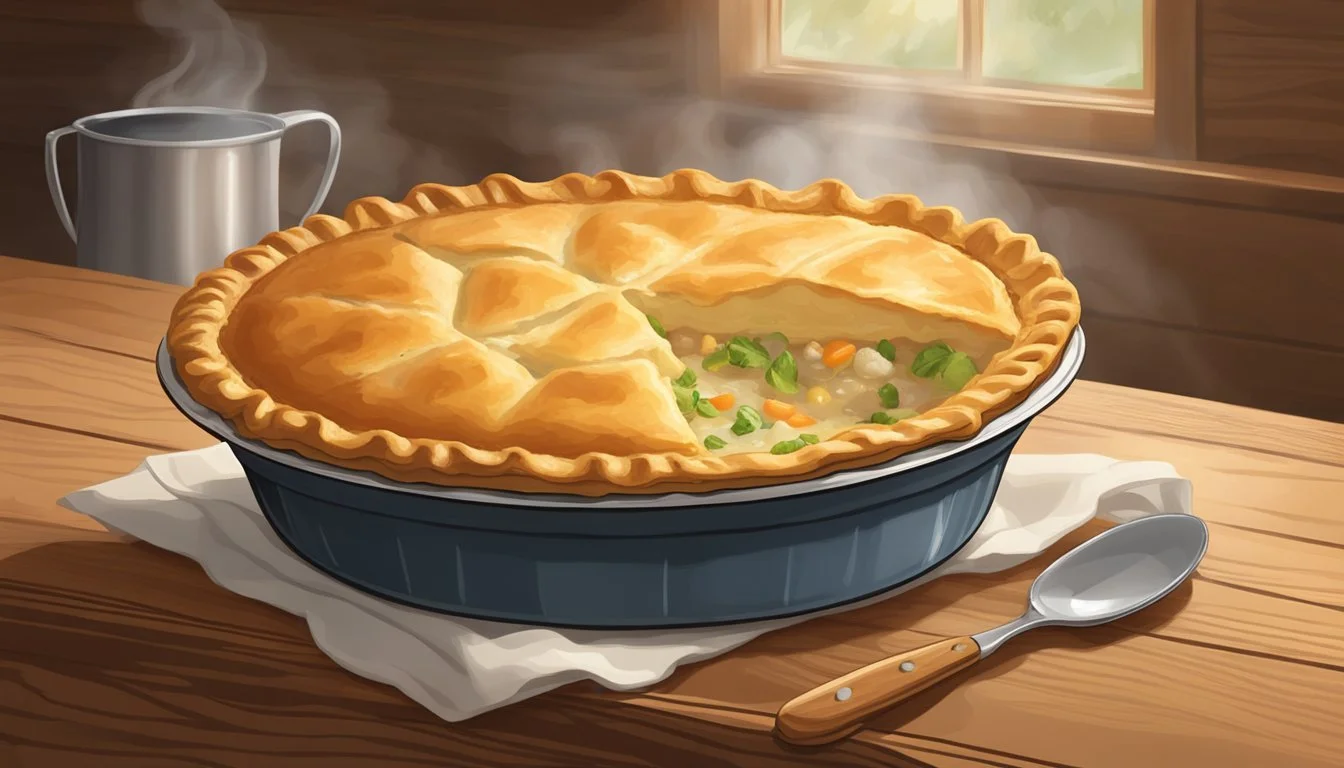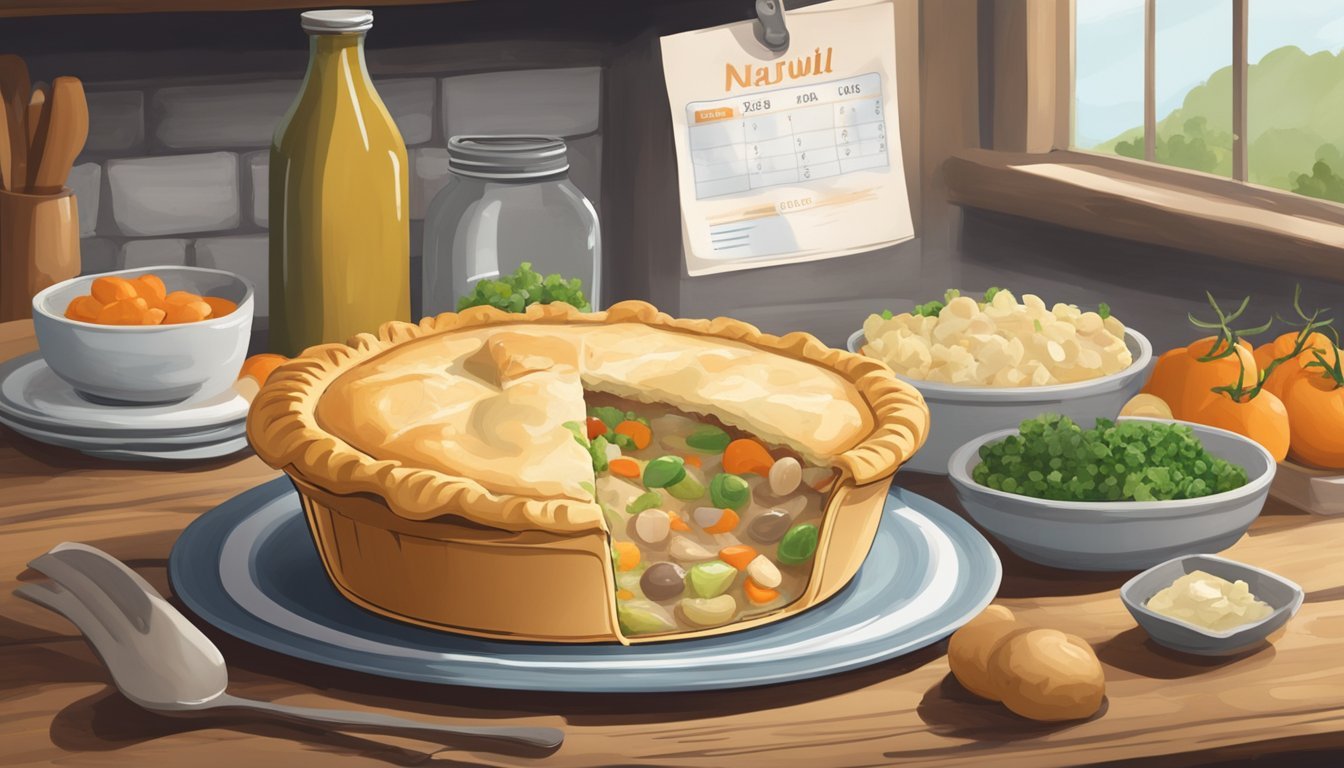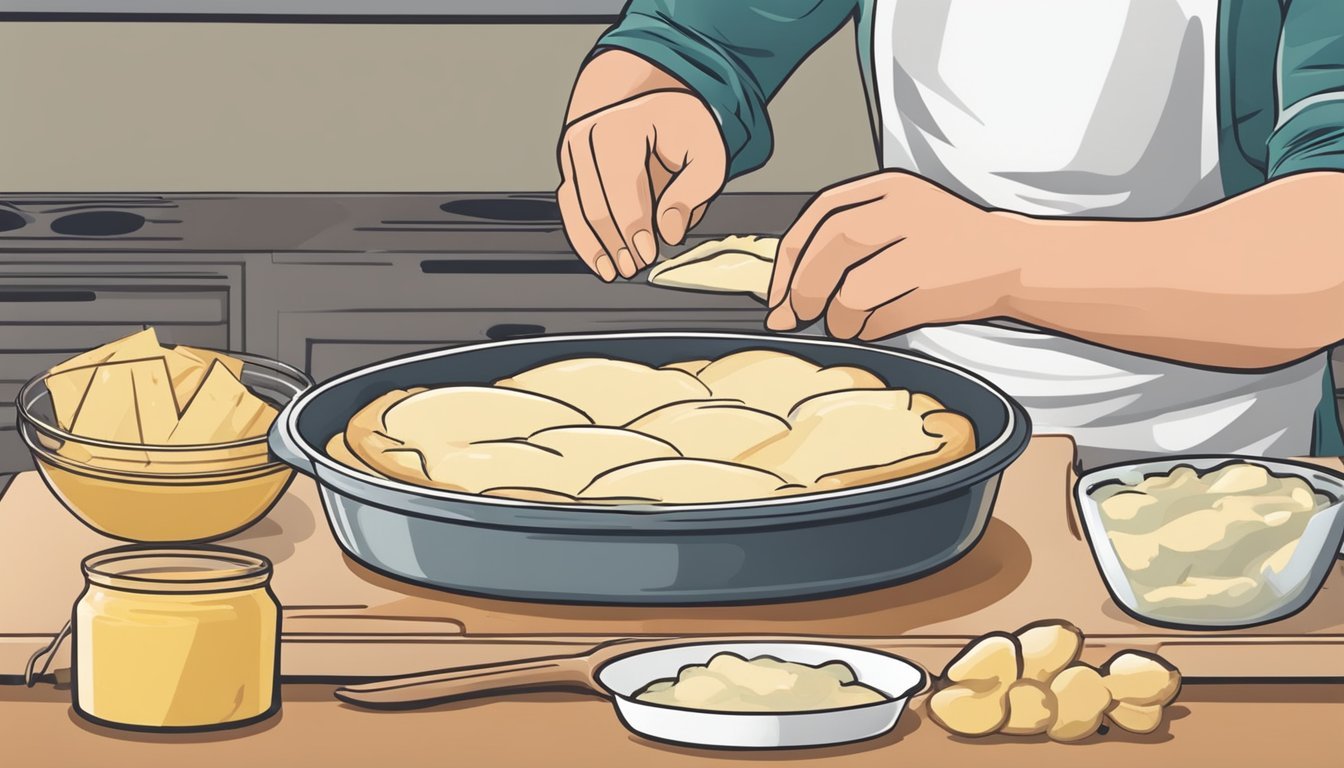How Long Does Boston Market Chicken Pot Pie Last?
Storage Tips and Shelf Life
When it comes to comfort food, few dishes compare to the satisfaction of a Boston Market Chicken Pot Pie. This classic meal, rich with creamy gravy, tender all-white meat chicken, and a mix of vegetables, provides a hearty experience wrapped in a flaky pie crust. While it tastes best fresh from the oven, understanding its shelf life is critical for those who want to stock up or enjoy leftovers responsibly.
A freshly baked Boston Market Chicken Pot Pie can last in the refrigerator for 3-4 days, ensuring you can savor the meal without hurrying. Whether you want to enjoy it for a quick lunch or a comforting dinner, keeping this timeframe in mind helps maintain its quality and safety. For those looking to store it longer, freezing offers a viable option.
Properly frozen, a chicken pot pie can maintain its quality for 4-6 months. This makes it a convenient option for meal prepping and ensuring you have a delicious meal ready whenever you need it. Just remember to reheat thoroughly to an internal temperature of at least 165°F to enjoy the best flavor and texture.
Understanding the Shelf Life
The shelf life of a Boston Market chicken pot pie varies depending on how it is stored.
Refrigerator: When kept in the fridge, a chicken pot pie can last between 3 to 5 days. It is important to store it in an airtight container to maintain freshness.
Freezer: If you need it to last longer, the freezer is a suitable option. Freezing the pot pie can extend its shelf life to 4-6 months. Ensure it is properly wrapped in aluminum foil or plastic wrap and placed in a freezer-safe container.
Room Temperature: Chicken pot pie should not be left at room temperature for more than 2 hours to avoid the risk of bacterial growth.
Using these guidelines will help keep your Boston Market chicken pot pie safe and enjoyable for longer periods.
Storage Best Practices
Proper storage of Boston Market chicken pot pie is crucial for maintaining its quality and ensuring food safety. Key storage methods include refrigeration and freezing, each with its guidelines.
Refrigeration Guidelines
To store a Boston Market chicken pot pie in the refrigerator, allow it to cool to room temperature before wrapping. Cover the pie with plastic wrap or aluminum foil to prevent odors from affecting the taste.
Place the wrapped pie in an airtight container to minimize exposure to air and reduce the risk of bacterial contamination. Stored this way, the pie can last 3 to 4 days in the fridge.
Make sure your refrigerator is set to 40°F (4°C) or below to ensure proper food safety standards.
Freezing and Thawing Instructions
For longer storage, freezing is the best option. Wrap the cooled chicken pot pie tightly in plastic wrap, then cover with aluminum foil to protect against freezer burn.
Place the wrapped pie in a heavy-duty freezer bag or an airtight container. Frozen chicken pot pie can last up to 4-6 months.
To thaw, move the pie to the refrigerator 24 hours before you're ready to reheat it. This slow thawing process helps maintain texture and flavor.
Handling Leftovers
After enjoying your meal, promptly refrigerate leftovers. Cut the remaining pie into smaller pieces for quicker cooling and wrap each piece in plastic wrap, followed by aluminum foil.
Store the wrapped pieces in an airtight container to ensure they stay fresh and safe to eat. Handle leftovers with clean utensils to avoid introducing bacteria.
Leftover chicken pot pie should be reheated to an internal temperature of 165°F (74°C) to ensure safety.
Heating and Serving
Properly reheating and serving Boston Market chicken pot pie ensures optimal flavor and texture. Maintaining a crispy crust and even heating are key to enjoying this dish at its best.
Reheating Tips
When reheating Boston Market chicken pot pie, using the oven is generally recommended to achieve a crispy crust. Preheat the oven to 350°F and cover the edges of the crust with aluminum foil to prevent burning. Heat the pie for 50-55 minutes.
For a quicker option, consider using a microwave. Cut the pie into slices, place them on a microwave-safe plate, and cover with a damp paper towel. Microwave on low power for 1-2 minutes and check if it's evenly heated. If not, continue microwaving in 30-second intervals until hot.
An air fryer can also be used for reheating smaller pot pies. Preheat the air fryer to 350°F and heat a 5-inch pie for 12-15 minutes, a 9-inch pie for 15-20 minutes, and a 10-inch pie for 10-12 minutes. Always check the internal temperature to ensure it’s thoroughly heated.
Serving Size and Presentation
Boston Market chicken pot pies are typically available in various sizes, commonly 5-inch, 9-inch, and 10-inch. Consider the serving size when preparing portions. A 5-inch pie is ideal for a single serving, while a 9-inch or 10-inch pie can serve multiple people.
For an appealing presentation, serve the pot pie on a plate with a side of green salad or steamed vegetables. This adds both color and nutritional balance to the meal. For an extra touch, garnish with fresh herbs like parsley or thyme.
Always ensure that the pie is piping hot, and the crust is crispy for the best dining experience. Divide the pie neatly into individual portions if serving more than one person, maintaining the integrity of the crust and filling.
Ingredients and Nutrition
Boston Market Chicken Pot Pie features a blend of savory ingredients and a nutritious profile that appeals to many. The dish combines a flaky crust with a rich, creamy filling full of vegetables and chicken, providing both comfort and sustenance.
Core Ingredients
The Chicken Pot Pie by Boston Market includes a variety of ingredients critical to its flavor and texture. The filling consists primarily of marinated cooked chicken breast with rib meat, carrots, cream, and milk. Vegetables such as corn and peas add both color and nutrients.
Additional components like modified food starch, onions, celery, and chicken fat enhance the overall taste profile. The pie also contains seasoning blends and a chicken-based broth for a deeper, richer flavor. The use of ingredients such as carrageenan and sodium phosphates helps in preserving the texture and extending shelf-life.
Nutritional Information
The Boston Market Chicken Pot Pie provides a balanced but indulgent nutritional profile. A single serving delivers approximately 470 calories, making it a hearty meal option. This dish includes fat, carbohydrates, and a moderate amount of protein primarily from the chicken and cream.
Users should note the fat content, which stands out at significant levels due to the cream, milk, and butter components in the crust and filling. This pot pie also contains sodium and cholesterol, making it important for consumers to consider their daily intake limits. The presence of vitamins and minerals from vegetables ensures some added nutritional benefits, despite the higher calorie count.
Quality and Freshness
Understanding the quality and freshness of Boston Market Chicken Pot Pie helps ensure the best taste and safety. Specific signs can help differentiate a fresh pie from one that has gone bad.
Identifying Freshness
Freshness in Boston Market Chicken Pot Pie is marked by its scent, texture, and appearance. A fresh pie generally has a pleasant smell of cooked chicken and vegetables. The crust should be golden and flaky without any soggy areas.
To maintain freshness, the pie should be stored in an airtight container in the refrigerator. Typically, a chicken pot pie with fresh ingredients lasts up to 3 days. Pot pies with canned or frozen vegetables can extend the shelf life up to 5 days.
Signs of Spoilage
Spoilage in a chicken pot pie is indicated by changes in smell, texture, and color. An off or sour smell signals bacterial growth and should not be ignored.
Visual signs such as mold on the crust or filling are clear indicators that the pie is no longer safe to eat. Additionally, a slimy texture on the crust or filling is a sign of bacterial contamination. Always check the expiration date on pre-packaged pies to ensure safety.
Making a Homemade Alternative
Creating your own chicken pot pie at home can be a delightful and rewarding experience. It allows for customization of flavors, use of fresh ingredients, and confidence in what goes into your meal.
Home Preparation Techniques
When preparing chicken pot pie at home, start by cooking boneless, skinless chicken breasts. Season them with salt and pepper before simmering in water until fully cooked. This ensures the meat is tender and flavorful.
Next, prepare your vegetables. Classic choices include carrots, peas, and celery. Cut them into bite-sized pieces for even cooking and a balanced texture throughout the pie. Sauté the vegetables lightly to enhance their taste.
Pastry dough plays a crucial role in a homemade chicken pot pie. Ready-made pie crusts are convenient, but making your own can add a personal touch. For a golden, flaky crust, use cold butter and cold water, and avoid overworking the dough.
Homemade Recipe Tips
To thicken the filling, use a mixture of chicken broth, half-and-half, and flour. Cook this mixture over medium heat, stirring frequently until it reaches a smooth, thick consistency. This step ensures a rich, creamy sauce that holds the pie ingredients together.
Incorporate fresh herbs like thyme or parsley to elevate the flavor. For extra depth, consider adding a dash of garlic powder or onion powder. These small additions create a more robust taste profile.
Bake the assembled pot pie in a preheated oven at 425 degrees F until the crust is golden brown and the filling is bubbly. Allow the pie to rest briefly before serving to let the sauce set, making for a cleaner slice and an enjoyable dining experience.
Comparing to Store-Bought
Chicken pot pie from Boston Market often stands out thanks to its consistent quality and the convenience it offers. When comparing it to store-bought options, several key factors must be considered, such as quality differences and cost considerations.
Quality Differences
Boston Market’s chicken pot pie is known for its hearty, flavorful filling, and crispy crust. The ingredients used often include marinated cooked chicken, a variety of vegetables, and a savory sauce, contributing to a well-rounded taste profile.
Store-bought pot pies, on the other hand, can vary significantly in quality. Some might use lower-quality meats or fewer vegetables. The crusts may not be as flaky or flavorful, and the overall freshness might be lacking due to longer shelf lives.
Freshly baked Boston Market pies tend to have a homemade feel. In contrast, many store-bought versions can taste processed. This difference in quality may affect the enjoyment and texture experience of the dish. Consumers looking for a rich and comforting meal often find Boston Market’s offering superior in many respects.
Cost Considerations
While Boston Market's chicken pot pie is typically more expensive than generic store-bought options, the price might justify the quality and flavor it delivers. The cost reflects the use of better ingredients and the effort to maintain consistency and taste.
Store-bought pot pies are generally more economical. They are often available in bulk or at a lower cost, which can be more attractive for budget-conscious consumers. Economical brands might offer decent taste, but they may lack the richness and authenticity of freshly baked options.
Balancing quality with budget is crucial. While Boston Market provides a premium experience, store-bought pies can be a practical alternative for those prioritizing cost over culinary excellence.









